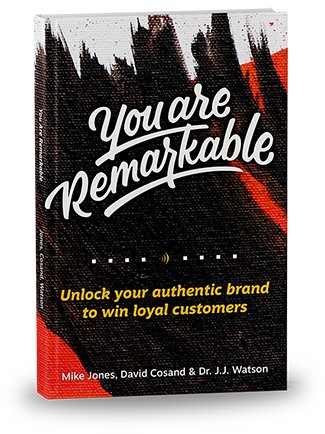“Research is formalized curiosity. It is poking and prying with a purpose.”
– Zora Neale Hurston
There is science in connection with your audience. After you’ve completed steps 1: the SWOT analysis and 2: Maslow’s Pyramid, you now know the benefit you want to convey to your audience. Now, it’s time to find out how they prefer to hear about it, so it’s relevant and cuts through the noise.
Step 1: Form your Working Hypothesis
“Find out everything you can about the audience.”
This seems wasteful as a guiding principle for research. Maybe it’s the way I look at this statement, but it sounds like a lot of work, prone to rabbit trails. I’d rather start with a working hypothesis, and get really interested in whether or not it’s true.
Write down your hypothesis, and then change it as you go.
List 3 things that you think could be wrong with your hypothesis. But don’t research yet. First, find out how you’d disprove them. This is where people make a mistake; they think they’re asking the right question when they haven’t found the right question yet. In other words, without defining how you’d know something were true or not, you’re going based on feelings. This works much better in political conversations, where people really want to believe something is true. It doesn’t work as well when you really have to convince people.
And this is where it can get sticky. Clients don’t always want the truth; sometimes, they want you to prove what they already think is true. So will you feed their arrogance, or will you challenge them?
Step 2: Write your Hypothesis
Seriously, take a stab at it. Lay out your assumptions before you do any research. Write 1 or 2 pages about who the audience is, what your product is, and why it matters to your audience.
- Frame the product in their terms.
- Talk about the customers and their lives.
- Demographics: The language of media. These are the statistics that help you know how to buy media. It consists of age ranges, gender, etc.
- Psychographics: How do they think?
- What’s their life like?
- Why the product matters to them. If it doesn’t matter, you don’t have a marketable product.
- Why the customer should believe your claims. This is where you put the weakest claim, from your audience’s perspective, and talk about why it’s not really that weak. Does your target audience think your product can’t possibly clean their pool the way you say? Then maybe the focus of the campaign changes to simplifying the technology.
Next write your research questions. Now that you’ve written all that down, you probably can see some assumptions in your thinking. Show it to a few other people and see what doesn’t ring true to their experience. Write down the things that are questionable and that, if not true, will hurt your ability to connect with your audience. This is your list of research questions.
Step 3: Disprove Your Assumptions
Now it’s time for a little research. You’ll use qualitative and quantitative research to test your research questions.
Qualitative research uses open-ended questions, in conversations with your audience, to dig up new and unexpected insights. It asks questions you didn’t know you needed to ask by letting the audience member take it where they want to.
- Qualitative research does not generalize facts, but unearths new insights that should then be developed and tested.
- They’re done in a discussion, not a survey. You can do a focus group or interviews. Interviews usually take you deeper. Focus groups are more cost-effective and biased.
Quantitative research comprises closed-ended questions. Those questions are meant to generalize findings.
- You usually hire this out to a research firm if you want statistically valid results. In other words, you choose a population, and then hear from enough of that population that you could argue represent the whole.
- This is done in a survey, not a discussion guide.
Start with qualitative. If you’re not sure how to conduct a qualitative interview, talk to us. We can teach you how, or we can do it for you. But the short version:
- Write a discussion guide with open-ended questions. Plan on recording the interviews in audio or video.
- Do 3 interviews. See what you come up with. Noticing a trend or interesting insights? Then adjust your discussion guide to allow people to comment on those insights.
- Do 10 more interviews with your revised discussion guide. Revise again, if necessary.
- Do 6 more interviews.
- Summarize the 3-4 most interesting and surprising things you heard over and over again (even if it’s in different words). This is called “saturation,” and it’s the qualitative analog to quantitative’s “statistical significance.”
Once you have some insights that you think are true, call the research company and let them know your new assumptions. Tell them your target audience, and then wait for their results and make adjustments.
Research should be interesting, not hard.
Research needs to be valid and helpful, but it also should spark interest on your part, or it won’t yield interesting results. It becomes much more engaging when you start by turning your assumptions into a working hypothesis, writing your finished product, and then disproving what you think is true. This is where it gets really fun.
Remember, this is about connecting with your audience in a way that your competition won’t or can’t. If you want to create awareness, interest, desire and especially action, delivering truth in a relevant way to your audience will convert more than any marketing gimmick.
Need help with this? Get in touch.



